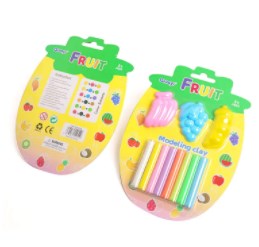Plasticine toys, with their vibrant colors and pliable nature, have become a beloved staple in the world of children's playthings. These toys, which can be molded into countless shapes and forms, are not only a source of entertainment but also a tool for fostering creativity and motor skills. However, the durability of plasticine toys is a critical factor that determines their longevity and the value they provide to both children and parents. This article delves into the various strategies that manufacturers can employ to enhance the durability of plasticine toys, ensuring they remain a cherished part of childhood for years to come.
The first step in improving the durability of plasticine toys is selecting the right materials. High-quality polymers and plasticizers are essential for creating a product that is both safe and long-lasting. Manufacturers must invest in research and development to identify the optimal blend of ingredients that will provide the desired pliability without compromising the toy's resilience. Additionally, the use of non-toxic, hypoallergenic materials is paramount to ensure the safety of young users.
Once the materials have been selected, the manufacturing process itself must be meticulously controlled. The temperature and duration of the mixing and molding processes can significantly impact the final product's quality. Consistent quality control checks at every stage of production are crucial to identify and rectify any issues that may arise, such as uneven distribution of materials or the presence of air bubbles, which can weaken the plasticine.
Another aspect to consider is the design of the plasticine toys. While it is important for them to be visually appealing and engaging, the design should also take into account the toy's structural integrity. For instance, incorporating features that allow for better grip and manipulation can reduce the likelihood of the plasticine breaking or deforming. Moreover, the use of reinforced edges and stress points can help distribute the forces exerted during play more evenly, thus enhancing the toy's overall durability.
Innovative packaging can also play a role in the durability of plasticine toys. By providing a protective case or container, manufacturers can shield the toys from environmental factors such as dust, moisture, and temperature fluctuations, which can degrade the material over time. Furthermore, packaging that allows for easy storage and organization can help prevent damage caused by improper handling or stacking.
Educational efforts are another key component in the longevity of plasticine toys. By providing parents and children with guidance on proper use, storage, and maintenance, manufacturers can help ensure that the toys are treated with care and used in a manner that maximizes their lifespan. This can include tips on how to avoid overworking the plasticine, which can lead to fatigue and breakage, as well as advice on how to clean and store the toys when not in use.
Lastly, ongoing research and development are essential for the continuous improvement of plasticine toys' durability. Manufacturers should stay abreast of the latest advancements in materials science and toy design to incorporate new technologies and techniques that can further enhance the resilience of their products.
In conclusion, the durability of plasticine toys is a multifaceted issue that requires a comprehensive approach. By focusing on material selection, manufacturing processes, design, packaging, education, and ongoing innovation, manufacturers can significantly improve the longevity of these beloved playthings. In doing so, they not only provide greater value to consumers but also contribute to a more sustainable and environmentally friendly toy industry.



